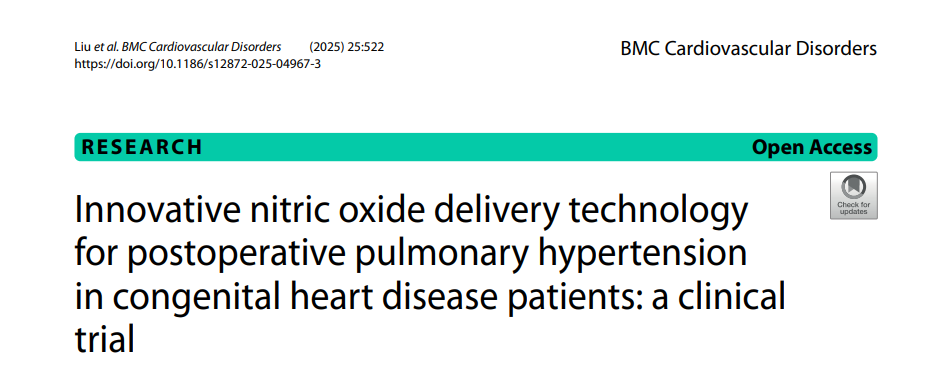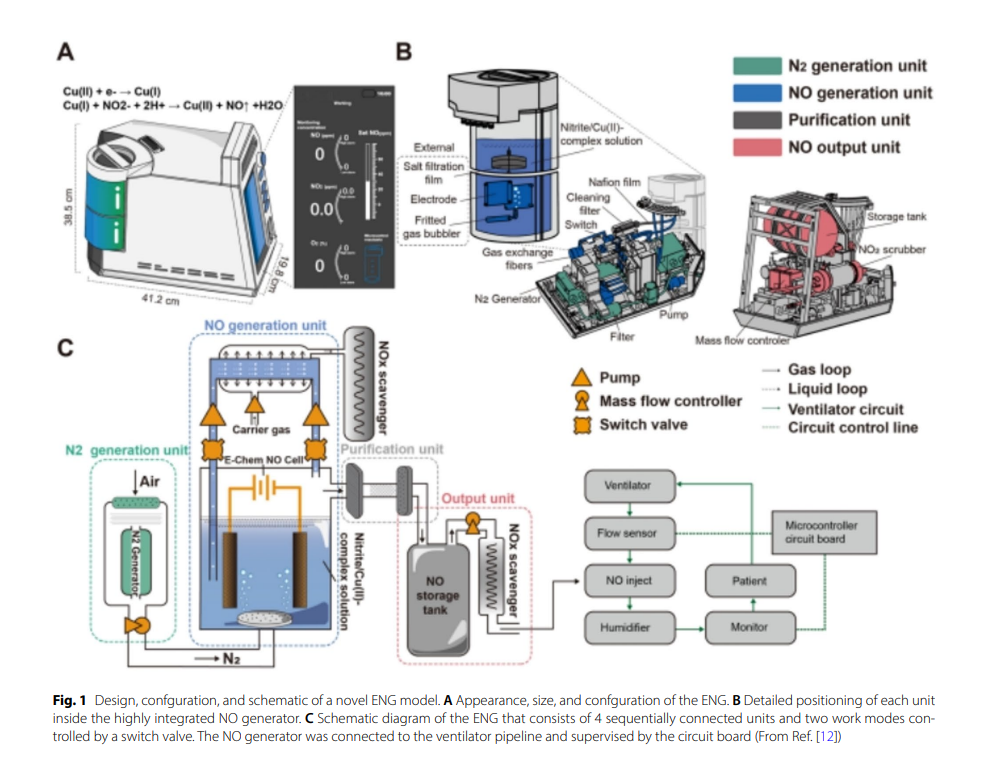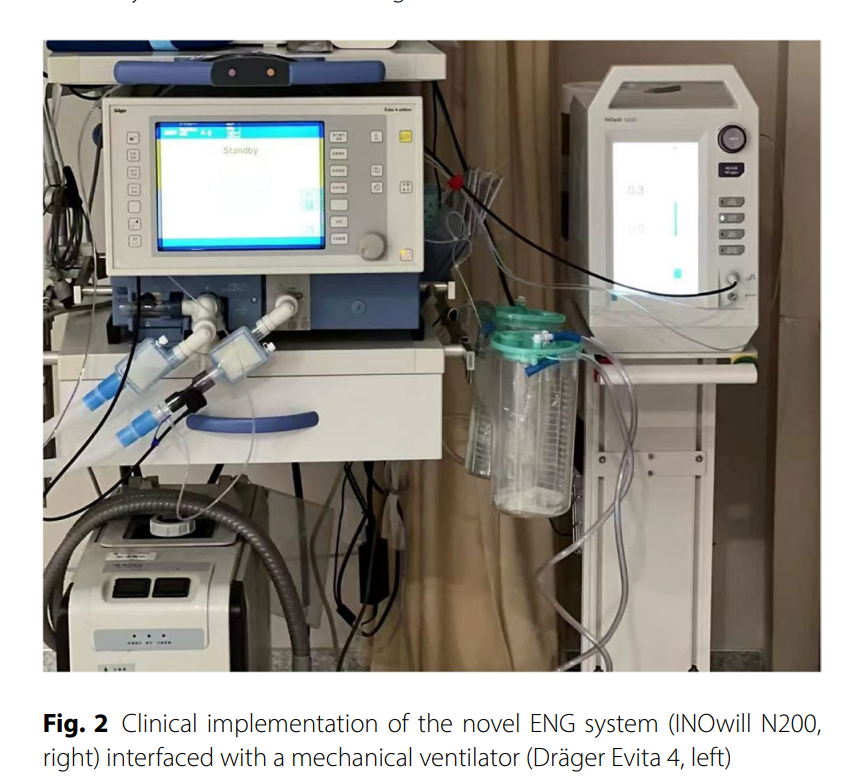[Literature Update] Innovative nitric oxide delivery technology for postoperative pulmonary hypertension in congenital heart disease patients: a clinical trial

Reference:
Liu, R., Li, Y., Li, B. et al. Innovative nitric oxide delivery technology for postoperative pulmonary hypertension in congenital heart disease patients: a clinical trial. BMC Cardiovasc Disord 25, 522 (2025).
Background:
Background Inhaled nitric oxide (iNO) is a selective pulmonary vasodilator with therapeutic benefits for pulmonary hypertension patients. Traditional cylinder-based iNO delivery systems are costly and complex, creating unmet medical needs. This study evaluated the safety and efficacy of a novel electrochemical nitric oxide generator (ENG) for administering iNO to adult patients with congenital heart disease-associated pulmonary arterial hypertension (CHDPAH) in China following cardiac surgery.
Methods:
Twenty patients with CHD-PAH, undergoing cardiac surgery, were enrolled. Two hours post-surgery, when systemic circulation was stable, iNO was delivered via the ENG at 20 ppm. Clinical data were recorded, and iNO therapy was discontinued upon extubation. Safety, gas exchange, and hemodynamic parameters were analyzed before and at 2, 4, and 6 h post-treatment.
ENG Technical Methodology:
The novel ENG (INOwill N200) was connected to a ventilator (Dräger Evita4) in a cardiac surgery department. Nitrogen, an inert gas, delivered NO efficiently to the ventilator circuit, mixing with respiratory gas. NO flow was directed exclusively during the inspiratory phase of each breath cycle, ensuring synchronized delivery of NO at a constant concentration with each inhalation. This innovative approach not only minimized the consumption of NO gas, preventing excessive emissions that could lead to environmental contamination, but also ensured precise and stable delivery. Notably, by using nitrogen as the carrier gas, the generation of impurities, such as NO2 and other nitrogen oxides, was significantly reduced. The gas sampling port was strategically placed near the patient’s end of the inspiratory circuit to ensure accurate sampling, continuously and precisely monitoring the concentrations of NO, NO2, and O2 in the respiratory gas mixture.

Results:
All patients successfully received iNO treatment and were discharged. NO concentration remained stable, unaffected by ventilator settings, with safe NO₂ levels. iNO did not affect blood pressure (P>0.05) and caused no complications. It reduced systolic pulmonary artery pressure at 2, 4, and 6 h (P=0.0053, P=0.0218, P=0.0002). Hypoxemic patients showed improved oxygenation (↑PaO₂/FiO₂) and ventilation (↓PaCO₂) at 6h (P<0.05).

Key Advantages of ENG:
1. Gas Purity: Unlike traditional cylinder systems in China that typically utilize industrial-grade steel tanks (which may contain lower-purity NO), the ENG generates ultra-high purity NO gas containing only NO and nitrogen. Compared to both conventional NO cylinders and commercially available high-pressure arc systems, the ENG demonstrates significantly higher purity with markedly reduced nitrogen oxide byproducts and other impurities.
2. Safety: The ENG system offers multiple safety benefits: a) higher gas purity reduces toxic byproducts; b) eliminates high-pressure cylinder risks; c) inspiratory flow-synchronized delivery minimizes NO exposure; and d) ensures precise NO delivery during high-frequency ventilation, fully complying with guidelines.
3. Portability: The compact ENG system occupies significantly less space than traditional cylinders while delivering several-fold greater NO capacity. Utilizing electrochemical catalytic generation, the ENG supplies NO directly through an integrated delivery system, completely eliminating the need for storage cylinders.
4. Real-time Monitoring: The integrated system provides continuous monitoring of NO, NO2, and O2concentrations, enabling reliable clinical surveillance and enhancing operational safety during therapeutic administration.
Conclusion:
The ENG provided stable NO delivery, ensuring safety and efficacy in postoperative adult CHD-PAH patients. It was associated with improvements of hemodynamics and gas exchange without systemic side effects, offering a compact, efficient, and cost-effective alternative to traditional iNO delivery systems.

